Catalogue > Search
Results for : Tout le catalogue
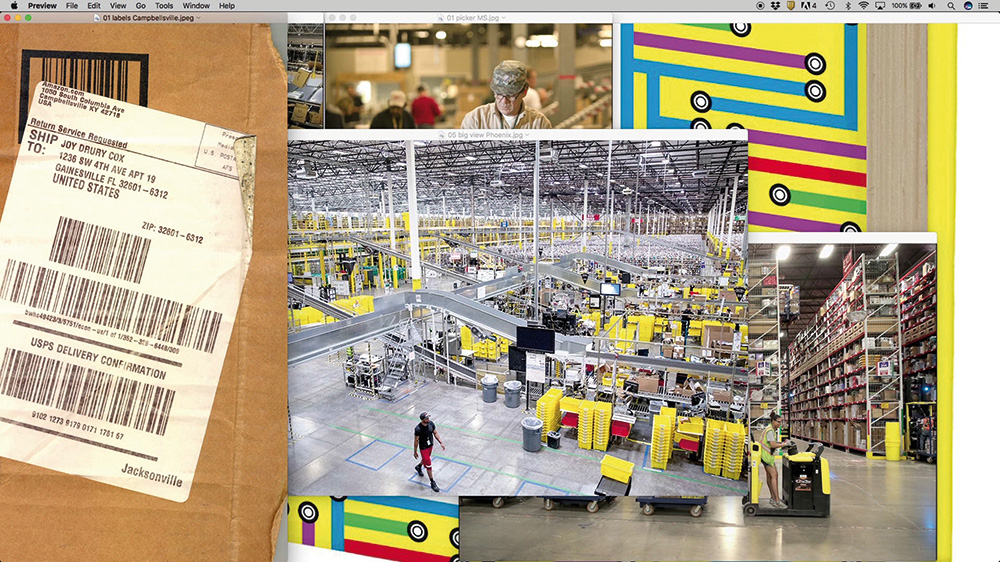
Roger Beebe
Amazonia
Experimental doc. | super8 | color | 24:37 | USA | 2019
“Amazonia” is a "desktop cinema" essay on one of the key sites where the virtual world of e-commerce transforms physical space—and physical labor: the Amazon.com fulfillment centers where the millions of items available for purchase with the click of a mouse await our orders. The film visits the four cities where Amazon’s four original fulfillment centers were located to meditate on the impacts of our online purchases on the people and places “at the other end of the internet.”
Roger Beebe is a filmmaker whose work since 2006 consists primarily of multiple projector performances and essayistic videos that explore the world of found images and the "found" landscapes of late capitalism. He has screened his films around the globe at such unlikely venues as the CBS Jumbotron in Times Square and McMurdo Station in Antarctica as well as more likely ones including Sundance and the Museum of Modern Art. Beebe is also a film programmer: he ran Flicker, a festival of small-gauge film in Chapel Hill, NC, from 1997-2000 and was the founder and Artistic Director of FLEX, the Florida Experimental Film Festival from 2004-2014. He is currently a Professor in the Department of Art at the Ohio State University.


Roger Beebe
S A V E
Experimental film | 16mm | color and b&w | 5:0 | USA | 2006
A disused gas station offers a curious imperative: "Save". A riddle posed in the form of architecture: what is there to save? One more instalment in the history of Americans pointing their cameras at gas stations; an attempt to figure out something about where we've been, where we're headed, and what's been left behind. The first part of "S A V E" was edited entirely on camera.
Roger Beebe is a professor of film and media studies at the University of Florida. His work has been shown around the globe at such unlikely venues as McMurdo Station in Antarctica and the CBS Jumbotron in Times Square, and at more likely ones including Ann Arbor, NY Underground, and Rotterdam. From 1997-2000 he ran 'Flicker', a bi-monthly festival of small gauge film in Chapel Hill, NC, and he is currently artistic director of FLEX, the Florida Experimental Film/Video Festival.
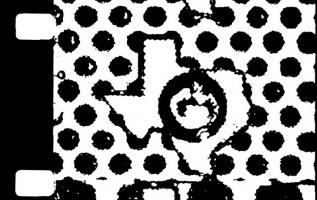

Roger Beebe
TB TX DANCE
Experimental film | 16mm | black and white | 2:30 | USA | 2006
The background of the image is made of patterns of dots directly laser printed on clear leader. That background also doubles as an optical soundtrack with different pitches created by the different density of dots. The dots were inspired by the stockings Toni Basil (?Antonia Christina Basilotta?) wore in Bruce Conner?s ?Breakaway? in 1966, which also serves as the source footage for the dancer in the film. Toni Basil herself is a source of inspiration for all 30-somethings who haven?t yet made enough of their lives. (She was 39 when ?Mickey? was a hit in 1982.) This film was commissioned at Cinematexas in 2005 over a meal of pulled pork and peach cobbler. This film is also known as ?32.37? (the price of that meal). From the Lunchfilm series: curator Mike Plante has lunch with a filmmaker and then gets a film for the cost of the lunch in trade. Some rules are written on a napkin. Here are the rules for this commission: Reference dance. Reference Texas. Have an autograph in it. Mention Toni Basil.
Roger Beebe is a professor of film and media studies at the University of Florida. His work has been shown around the globe at such unlikely venues as McMurdo Station in Antarctica and the CBS Jumbotron in Times Square and at more likely ones including the Museum of Modern Art, Ann Arbor, NY Underground, and Rotterdam. From 1997-2000 he ran Flicker, a bi-monthly festival of small gauge film in Chapel Hill, NC, and he is currently artistic director of FLEX, the Florida Experimental Film/Video Festival.

Amanda Beech
Covenant Transport, Move or Die
Experimental fiction | hdv | color | 22:47 | United Kingdom, USA | 2015
1. Covenant Transport, Move or Die in its original form is a multi-channel video installation, presented here as one screen from this format. The work speaks directly to the mutual fantasies of mobility and non-place that have occupied the capitalist liberal imaginary as well as the world of leftist politics and contemporary art. The work features five characters that occupy the site of a wasteland making up a workerist crew of manager, worker, programmer, consumer, and dealer. In this parallel reality, derived from and cluttered with the detritus of our life as we know it, they program and mobilize the unrelenting movements of economies, states, culture and people. Using game show style methods of consensus building they wade through the terrain of global capitalist power to transcend the political stagnation of technology, industry and the mire of our present.
Amanda Beech is an artist and writer. Her work entangles narratives of power, reason and cause from philosophical theory, literature and real political events, exploring how the myths that seem necessary for an account of human agency are lived with, but can also be supplanted by a realist politics. Through entangling narratives of power and agency from philosophical theory, noir-ish narratives of TV shows like 24, CSI, the hard-boiled writing of James Ellroy and real political events, her artwork, in video, print and sculpture manifest an argument for a propositional art that executes another form of force to surpass the notion that art simply reflects and reproduces the status quo. The work traverses the aesthetic and philosophical paradigms of institutional, individualistic, metaphysical, rational and mythological authorities to propose a new realist politics of the artwork itself that can surpass the tragic consciousness and the ideal skepticism that has mutually championed and debilitated the value of art in Modern and contemporary culture. In this hard critique of liberal and neo-liberal cultural politics her work examines and produces the condition of language as force and the force of language with the weight of a commitment to a future

Sergio Belinchón
AVALANCHA
Art vidéo | 16mm | color | 7:0 | Spain, Germany | 2008
Avalancha is the story of a group of people hidden in the woods, they start running out of it and try to trespass a fence with handmade ladders, they jump and run into the woods, and the loop starts, they are hidden in the woods? Based on the events that happened in the border of Morocco and Spain, when several big groups of people tried to trespass the border fence. The press called this event as "avalanche". The film was shot in Germany, in a former fence separating East and West Germany, with german actors, trying to mix equal situations but not being obvious, there is no information about all this in the video. This is just a choreography based on a situation. I filmed the action from 3 different points of view that we can see simultaneously in 3 screens, one for the fence, one for the woods and one for the whole action. The video is presented as a continuous loop as the real fences problem is also a loop.


Foued Bellali
rue du Nord
Documentary | dv | color | 50:30 | Belgium | 2003
Testimony of immigrants of the first generation: North African men and women in cross sight with a Polish sight and a catholic priest fro Belgium. Life of immigration under personal tale form.
First film by Foued Bellali, Katty de Boeck, Nadia Remy. Filmmaking and editing by Foued Bellali, Katty De Boeck, Nadia Remy. Camera and sound by Yael André, Foued Bellali, Katty De Boeck, Nadia Remy. Production: Vow. 2004 Length: 54 min. Form: miniDV Also available in beta SP and DVD (soon). Subtitle: original version with French subtitle. Text transcription in French available. Subtitle in English available soon (DVD).


Bernard Bellefroid
Rwanda, les collines parlent
Documentary | dv | color | 50:0 | Belgium | 2005
Eleven years after the genocide, the film follows the survivors and torturers before and after the first Gacaca trials during which they find each other face to face. There's Obede, accused of having killed children, and whose request for pardon is simply a cynical release strategy. There's also Gahutu, who has "no remorse" and who, facing his judges, speaks of "snakes" in reference to those being exterminated. And finally, there's François, forced to kill his own brother in order to survive and who is now trying to make it up with his sister-in-law. Through these three stories, the film weaves a portrait of a society at war against the still present ideology of genocide.
Born in Belgium in 1978, Bernard Bellefroid followed two years of undergraduate studies in journalism. In 2003, he graduated from the National Film School of Belgium (INSAS). "Rwanda, the hills are talking" is his first documentary film. At the moment, he is preparing his first feature film "The Regatta", produced by Jean-Pierre and Luc Dardenne and selected by the "Atelier du festival du film de Cannes" 2006.
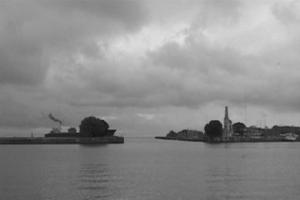

Luca Bellino
Mate y moneda
Documentary | dv | color | 52:0 | Italy | 2004
"Between 1870 and 1955 millions of Italians migrated to Argentina. On the 21st of December 2001, Argentina suddenly fell into chaos. Within the context of the 2003 elections, the movie retells the story of migration between these two countries, the story of a shattered dream. Memories and present time yearnings mix, connecting the trip of those who decided to travel back to the path their ancestors took ..."
Piero Messina was born in Sicilia (Caltagirone) in 1981, and is about to complete his thesis in Film and Video studies at the DAMS Roma Tre university (in Arts, music and theater). At age 16, he directed his first short movie which was awarded with the special prize from the Jury at Libere Visione. He successively directed "Ben Adam" and ten comic video clips "Melies e caramelle". In 1999 he produced and directed with Fabio Cillia the amateur full-length movie "Una Vista non basta", which was shown at the Politeama in Caltagirone. After that he made a documentary "Due esempi di sviluppo" and the advertisement spot of AVIS (Italian association of Blood donation). At age 22, he directs "Stidda ca curri", which is rewarded with the best short movie award at the 5Oth Taormina film fest, the "Giglio D'Argento at the 55th Valdarno Festival, the special distinction at Fano's International Festival and Arcipelago Festival (Roma), best image at the 28th International Meeting Henri Langlois and is selected for the 12th biennial of European and Mediterranean young artists (bjcem). Besides, he has under his belt musical creations, soundtracks of his own movies as well as these of Luca Bellino's movie "Mate y moneda" and "Due Sigarette", a short movie produced by the Fandango"Due Sigarette". He is currently preparing a short movie inspired by a poem written by Cesare Pavese.
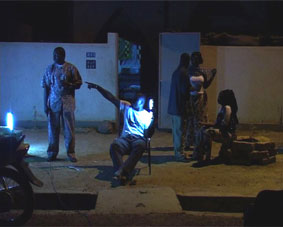

Neil Beloufa
Kempinski
Experimental video | dv | color | 15:0 | France, Mali | 2007
Welcome to Kempinski, The people of this mystical and animist place introduce it to us. "Today we have a space station. We will soon launch space ships and a few satellites that will allow us to have much more informations about the other stations and other stars. " The video has no script and the screenplay is caused by a specific game rule.
Neil Beloufa was born on 1985 in Paris. He is student in the Beaux-Arts and in the Art Decoratifs of Paris. He is in scholar exchange in Cooper Union in New York. In 2008 he ll be in CalArts in Los Angeles.

Neil Beloufa
Sans titre
Fiction | dv | color | 15:0 | France | 2010
A cardboard decor and photographs reconstitute a luxury Californian-type villa in Algeria. Its inhabitants, neighbours and other protagonists imagine themselves there to explain why and how the latter was occupied by terrorists in order to hide whilst, paradoxically, it is entirely in glass. They even polished it clean so as to leave no traces. This improbable and irresolvable anecdote encourages the characters to invent images of anevent given media coverage without the images nor the story and thus missing the main point.
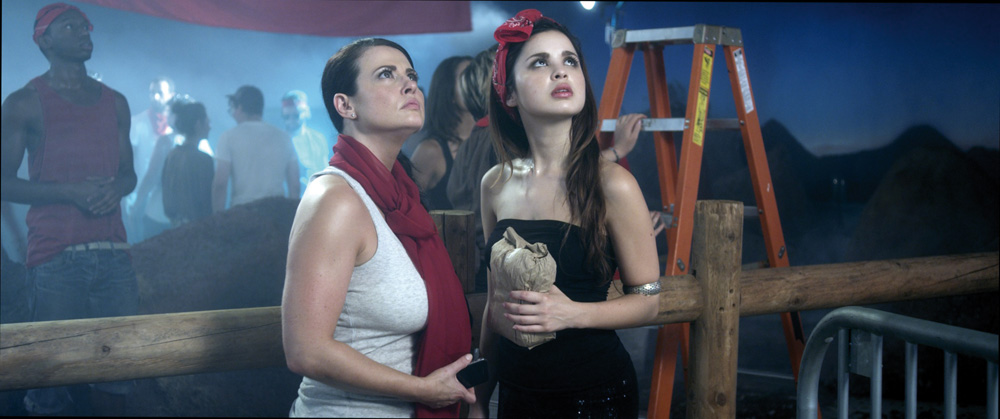
Neil Beloufa
TONIGHT AND THE PEOPLE
Experimental fiction | hdv | color | 81:0 | France, USA | 2013
In a wannabe Hollywood-like scenery, cowboys, gang-members, activists, hippies and rebel-teenagers craft a philosophical tale that recycles the strongest stereotypes of our time. In this world where documentary and Sci-Fi collide, class warfare meets extra- terrestrial invasion.
Neil Beloufa (1985, Paris) studied at the Ecole Nationale Supérieure des Beaux- Arts (ENSBA) and the Ecole Nationale Supérieure des Arts Décoratifs (ENSAD) in Paris, and in Le Fresnoy - National Studio for Contemporary Arts. He received several awards, notably the Prix Videoforme of Clermont Ferrand 2009, the Grand Prix IndieLisboa 2009, the Arte Award for a European Short the Jury Price at the Oberhausen Film Festival in 2011. His work was shown in many solo exhibitions in Frankfurt, Los Angeles, Paris and New York, and selected for numerous group exhibitions and projects since 2007. His films were screened in international festivals for video and documentary. In 2012, he was awarded the Audi Talent Awards for his feature-film project TONIGHT AND THE PEOPLE, which premiered at FID Marseille in 2013. That same year, he was awarded the prix Meurice for his next film project. He lives in Paris.
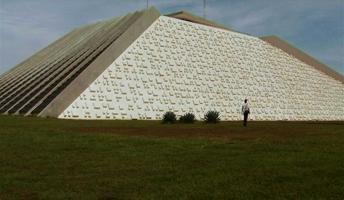

Louidgi Beltrame
Brasilia/Chandigarh
Experimental doc. | dv | color | 27:0 | France | 2008
Two architects hoped to build the ideal city: Oscar Niemeyer created Brasilia in the middle of the Brazilian mato (savanna); Corbusier went to India to build Chandigarh. Both cities raise above the landscape, like two futuristic memoranda of concrete, monuments to their builders, those rare inhabitants who are given to us. The film is bases on the respective geometrics of Brasilia and Chandigarh, while the dialogue takes place between the two cities.
Louidgi Beltrame, screen writer and artist, was born in Marseille in 1971. He presented his work at the Workshop of the Play of Palm, the Palais de Tokyo and the Museum Andre Malraux in Le Havre as well as the Festival of Film of Locarno and the International Documentary Festival of Marseille.

Louidgi Beltrame
gunkanjima
Experimental doc. | dv | color | 33:0 | France | 2010
Située au large de Nagasaki au Japon, l?île de Gunkanjima est une colonie minière abandonnée depuis 1974. Objet d?une expérimentation urbaine verticale, extrême, et non planifiée, l?île rassemble aujourd?hui les vestiges archéologiques de l?architecture moderne japonaise. Ces formes vides, filmées comme des sculptures monumentales, sont néanmoins habitées par des histoires stratifiées - celles des conditions de production, des idéologies qui ont motivé ces chantiers et des hommes qui les ont bâti et exploités.
Louidgi Beltrame est un artiste français. Né à Marseille, il vit et travaille actuellement à Paris. Son travail se développe autour de la déconstruction des structures narratives et formelles du cinéma, considéré comme un médium avec sa syntaxe spécifique, mais également comme une force politique qui a influencé les développements du siècle passé, et qui constitue également une documentation de l?architecture moderniste et de ses vestiges. Le travail de Louidgi Beltrame est exposé dans des galeries, des musées et présenté dans des festivals de cinéma en France et à l?étranger, notamment au Musée d?Art Moderne et Contemporain de Strasbourg ; à Paris au Musée du Jeu de Paume, à la Fondation Ricard, au Palais de Tokyo, au centre d?art Le Plateau, au Centre Georges Pompidou. Ses films ont été diffusés au FID Marseille (festival international du documentaire), au festival international du film de Rotterdam, au festival du film de Locarno, à la Fondation Funarte de Rio de Janeiro, à LOOP, Barcelone ; au Japon à la Echigo Tsumari Art Triennal, à Niagata et à l?Hiroshima Art Document.
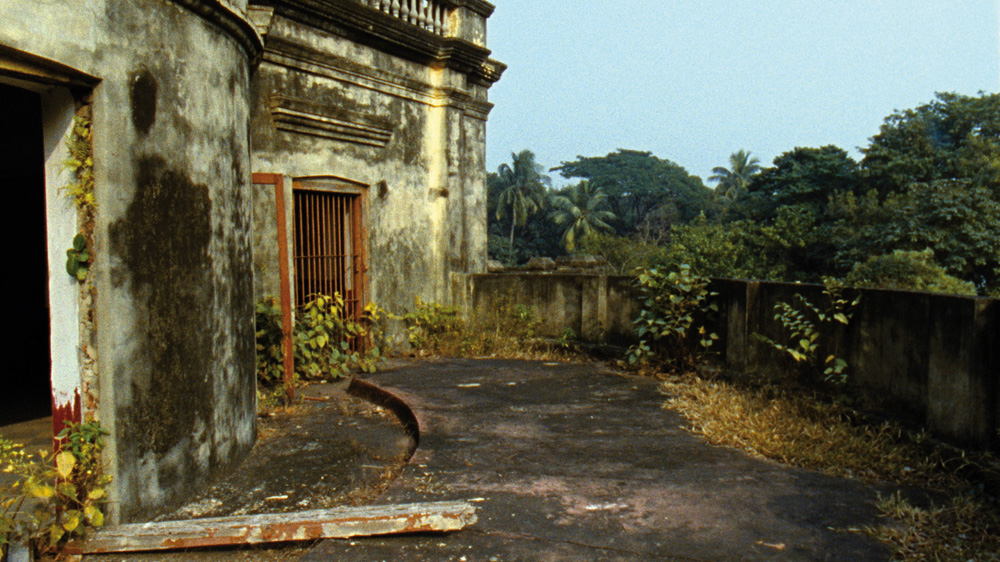
Louidgi Beltrame
the walking tree
Experimental doc. | 16mm | color | 35:0 | France | 2014
Louidgi Beltrame films in 16 mm a large banyan tree in the botanical gardens in Calcutta. This tree, whose distinctive feature is the way it spreads rhizome-like over several hundred yards, is approached like a forest of clones, a metaphysical space where histories re-surface: the history of the invention and parallel development of photography and telegraphy in the context of colonized India, Linnaeus’ dream according to Foucault, reminiscences of the films of Ritwik Ghatak and Satyajit Ray, where reality and fiction met.

Louidgi Beltrame
El Brujo
Experimental film | 4k | color | 17:29 | France, Peru | 2016
El Brujo, which means "The Sorcerer" in Spanish, is also the name of a Mochica archeological site. It is on this Peruvian beach that Louidgi Beltrame shot a part of his movie. The curandero (shaman) José Levis Picón Saguma is performing a re-enactment of François Truffaut’s 400 blows (1959) last sequence. In that sequence, the young hero, Antoine Doinel, interpreted at the time by iconic ?nouvelle-vague? actor Jean-Pierre Léaud, is running away in direction of the ocean. Right performing a Mesa - a psycho-active San-Pedro cactus related traditional healing ceremony - José Levis Picón Saguma is taking care of the vacant space left into the cinematographic apparatus by the actor whom was sick at the time of the shooting and thus was forced to remain in France. Feeling better soon after this magical operation, Jean-Pierre Léaud has been shot drifting through the streets of Paris, following a trajectory which is superimposing his memories from the 400 blows original shooting with his own "Nouvelle-Vague" subjective history. Through these transpositions, Beltrame orchestrates a series of shifts, with a migration of characters, patterns and eras. The geometric lines of the pyramids and excavations of the Peruvian landscape are echoed in the structure of the film?s editing, with tracking and panoramic shots, and are highlighted by the synthetic modular music of the track Triangle (1979) by Jacno.
Louidgi Beltrame was born in 1971 in Marseille and now lives in Paris. He studied at the Ecole supérieur d’art et de design Marseille-Mediterranée, the Fresnoy - Studio national des arts contemporains, and la Villa Arson in Nice. Beltrame is a growing artist in the contemporary art scene and has won the SAM prize for contemporary art in 2014. His work is based on documenting modes of human organization throughout the history of the 20th century. He travels to sites defined by a paradigmatic relation to modernity: Hiroshima, Rio de Janeiro, Brasilia, Chandigarh, Tchernobyl or the mining colony of Gunkanjima, over the sea off Nagasaki. His films - based on the recording of reality and the constitution of an archive - appeal to fiction as a possible way to consider History. The artist has exhibited in many places, namely at the Palais de tokyo (2006/2016), the Centre d’Art Contemporain de Chelles (2010), The Musée d’Art moderne et contemporain, Strasbourg (2008), the Pinchuk Art Center, Kiev (2007), l’Atelier de Jeu de Paume, Paris (2006), the Musée d’art conemporain de Val-de-Marne, France (2005), the Centre Georges Pompidou, Paris (2005).
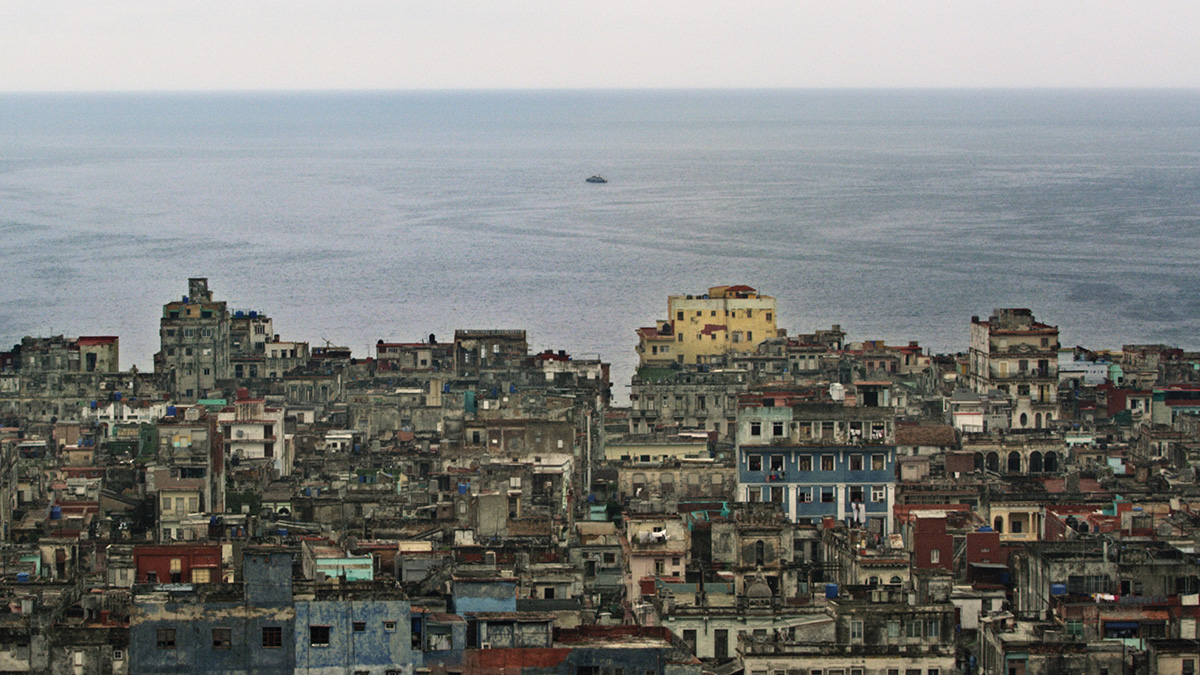
Marcel Beltrán, Marcel Beltrán
La opción cero
Experimental doc. | 4k | color | 80:0 | Cuba | 2020
A group of Cuban migrants use their mobile phones to record and transmit through social networks intimate moments of their passage through the jungle, gathering more than 100 hours of experiences. Immobilized in a makeshift camp by Cáritas in Panama City, the difficult passage through the Darien Jungle comes to life on their devices. In this migratory limbo, Cuban director Marcel Beltrán films the passing of the hours in the camp and gains access to this shocking archive.
Marcel Beltrán (b. 1985, Moa, Cuba) is a film director and producer currently living and working in São Paulo, Brazil. He is the founder of Mediocielo Films, a consultant for international development projects and a facilitator of sustainability practices within the arts, exploring environmentally and ecologically-focused issues. Beltrán’s work combines image degradation, memory and life experience creating a dialogue between the poetic and political / the intimate and public. Marcel has wrote, directed and produced “La música de las esferas” (2018) premiere at 35 MIFF and "La opción cero" (2020), a feature documentary with world premiere at IDFA, Hot Docs and DOC NYC, receiving, among other awards, Best International Feature Film at Miradasdoc (Spain), FIDBA (Argentina). His previous films were selected in film festivals around the world, such as MoMA Documentary Fortnight (New York), Busan International Short Film Festival, Documenta Madrid, DOK Leipzig, AmDocs (Palm Springs), Malaga, Biarritz, SANFIC (Santiago de Chile), Festival Latino (São Paulo), BIFF (Bogota), Havana Festival, among others.

Amber Bemak, Amber Bemak, Nadia Granados
Borderhole
Video | hdv | color | 14:0 | USA, Mexico | 2017
Borderhole takes place on a mythical border area between Colombia and the United States. We investigate the relationship between North and South America through the lens of the American Dream and the illumination of multiple tensions in and around the border. The piece explores imperialism, globalization through pop music, gender mutation in an international context, and the choreography of women’s bodies in relation to sociopolitical and ecosystems.
Nadia Granados is originally from Bogotá, and currently based in Mexico City. Her work explores the relationships between traditional pornography and violence and is both performative and technological, art and activism, and a mix of cabaret, intervention, and streaming video. In all of her work, she uses her body to detonate, opening up new pathways of action and shift consciences. Among the many awards she has received are the Franklin Furnace Fund, the 3rd Visual Arts Biennial Bogotá Prize, and the FONCA award for Colombia-Mexico artist residencies. Her work has been presented extensively and internationally. Amber Bemak teaches filmmaking at Southern Methodist University in Dallas, Texas, and her creative work is based in experimental and documentary film, as well as performance art. Amber’s work focuses on themes of Buddhist culture, performative explorations of the body in relation to greater political systems, and cross-cultural encounters in the context of globalization. Her feature and short films have played in numerous festivals internationally, and have been seen at venues including the Brooklyn Museum’s Elizabeth A. Sackler Center for Feminist Art, SculptureCenter, and Oberhausen Film Festival. She has taught film theory and practice in India, Nepal, Kenya, Mexico, and the United States.

Amber Bemak, Minax, Madsen
Two Sons and a River of Blood
Experimental film | mov | color | 10:23 | USA, Mexico | 2020
A queer woman is pregnant. The self-made family unit of two dykes and a trans man imagine a kind of erotic magic that will allow for procreation based solely on desire. Together they enact a public sex ritual to symbolize their hopefulness for multiplicity, acknowledging their cyborg bodies as technological interventions. When the queer woman miscarries her child, the three begin to build their own mythic understanding of where bodies live when they are not inside us. They create a story to trace movement of the non-body, from a hole, to a river, to a room. Images of an imaginary white room, an ikea-esque torture chamber of stillness, haunt them. As a parallel emerges between the pregnant body and the trans body, the techno-sex act becomes the key and a pyramid becomes the portal to access this other world of non-bodied existence.
Minax works in documentary and hybrid filmmaking formats. Madsen is a recipient of the Samuel Edes Prize for Emerging Artists (2017), the Tribeca Film Institute's All-Access Fellowship (2019), the Sundance Institute's Documentary Production Fund (2019), and the Bay Area Video Coalition’s Media-maker Fellowship (2020). Bemak is a filmmaker, artist, and educator. Her work is based in experimental and documentary film. Her award-winning work has been shown at venues including the Brooklyn Museum’s Elizabeth A. Sackler Center for Feminist Art, Museo Tamayo, and SculptureCenter, as well as Oberhausen, DocLisboa, Ann Arbor, Morelia, and the European Media Art Festival.


Jonathan Ben Efrat, Jonathan Ben Efart
Shesh Komot Le'Gehenom
Documentary | betaSP | color | 52:0 | Israel | 2008
Geha Junction, one of the busiest in the Tel Aviv area, hundreds of Palestinians live underground. Young and old, they slip into Israel to find work and bring a small wage home. Their hiding place is in the underground parking garage of an abandoned, unfinished shopping mall, hidden from view despite its location. They pass most nights of the week here, six floors below ground. One of the mall``s residents is Jalal who puts up with this hell in order to save money for his wedding while Nisrin, his fiancé, is waiting for him to finish the roof of their new house at Salem in the West Bank. From the darkness emerge still darker forms and ghostly voices. Under subhuman conditions, the men try to preserve their humanity. "In the dark", says Jalal, "the only thing left is to think about is love".
2008: script and directed, Six floors to hell (52min) full length film about "The Mall". won the best editing award at the Docaviv international FF 2008. won the RAI3 award at the CMCA Prize Turin Italy 2008. Leipzig FF 2008. Doclisboa FF 2008 Med FF Rome 2008 2005: script and directed, "The Mall" (12min) a short documentary commissioned by the World Health Organization; it shows the living conditions of Palestinian workers who defy checkpoints and roadblocks in order to find jobs in Israel. Israel?s documentary channel (Channel YES DOCO) Festivals: cinema du reel (Paris 07) Rotterdam (07) documenta (Madrid 07) Oxdox (Oxford 07) Doclisboa (Lisbon 07) won special MENTION for best short documentary 2003: wrote and directed,"Breaking Walls" (50min) documentary; it studies the connection between art and labor rights. At El Festival de Cine de Granada, ?Breaking Walls? won first prize for Integral Realization. Israel?s documentary channel (Channel 8) Labor film festivals: Sun Francisco Laborfest 2005 Ankara Labor film festival 2006 Seoul Labor film festival 2006 Globale06 film festival Berlin 2006
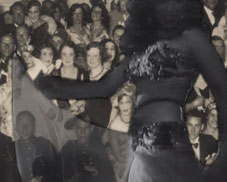

Haim Ben Shitrit
No Johny no
Experimental video | dv | color and b&w | 3:36 | Israel | 2006
"Anonymous soldiers", the anthem of the "Shtern gang", an anti- British extreme Jewish Underground which operated in the forties, translated to French with spelling mistakes. The text is being recited by a man and a woman, the father and mother of the artist, who are not familiar with the text and who are trying to please their son who has come for a visit. The recitation is interrupted by their corrections of the spelling, by the mother insisting on giving her son something to eat, and other sounds and oriental rhythms. The sound is orchestrated to characters camouflaged by desert landscapes digitally sculpted onto their faces. "no johny no" is a virtual belly dance, with a dreamy French-Arab, for English soldiers from a family photo album.
Born in Jerusalem, Haim Ben Shitrit studied with Christian Boltonsky at the Academy of Fine Arts in Paris. He graduated with distinction from the Bezalel Academy of Art and Design in Jerusalem. Over the years he has been awarded grants from the Manet-Katz Foundation, America-Israel Fund, and the Pollock-Krasner Foundation New York. His video installations and projects have been exhibited in Israel, France, England, Belgium, and Canada. Ben Shitrit is currently the director of the art department at the Israel Arts and Science Academy in Jerusalem.
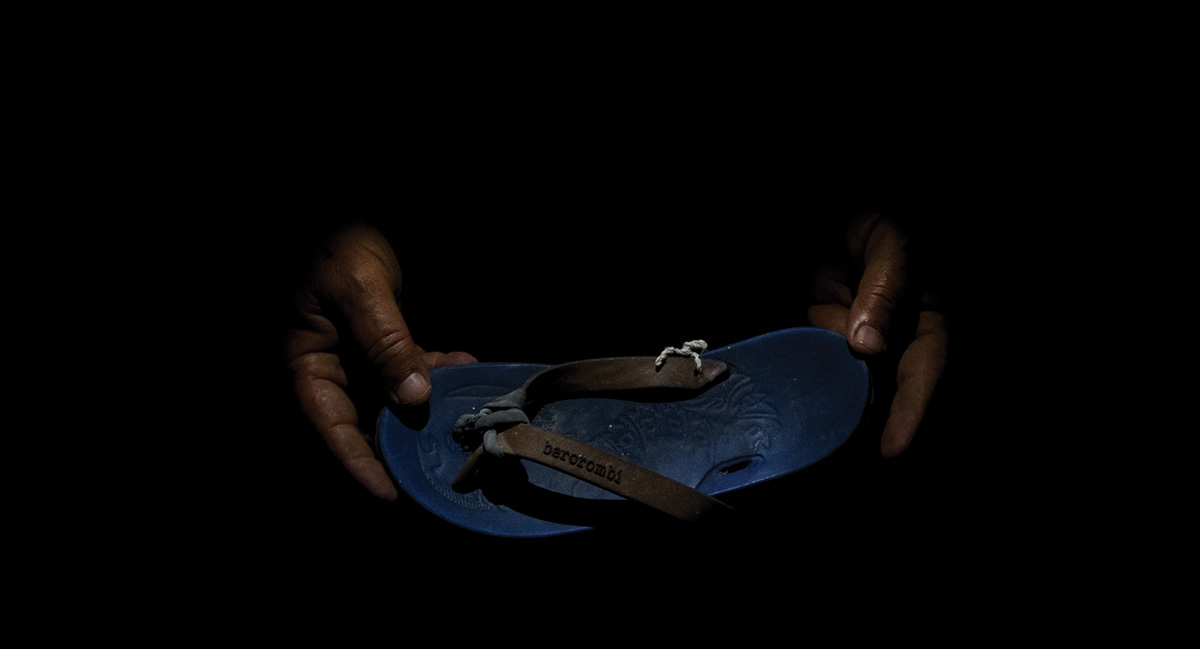

Younès Ben Slimane
We Knew How Beautiful They Were, These Islands
Experimental doc. | hdcam | color | 20:0 | Tunisia, France | 2022
A lone figure digs a grave in the dead of night. With no dialogue – and no sound other than the wind, the crackling of a fire and the scrape of a shovel against dry earth – we are confronted with a dark and mysterious, possibly cursed, universe where every object seems haunted by a meaning we barely sense, but which seem to confirm our anxieties. The head of an old doll, a comb, a lipstick. Relics whose silent language speaks of the end of their former owners. At sea, in the desert. Younes Ben Slimane’s disturbingly beautiful and melancholic imagery is bathed in darkness and in a golden chiaroscuro, lit only by the stars and the lone grave diggers’ headlamps.
Younes Ben Slimane: Tunisian artist and filmmaker, graduated from Le Fresnoy - Studio national des arts contemporains in 2022. His films have been selected in international festivals such as Locarno Film Festival, CPH:DOX, DokuFest, Festival dei Popoli. His work is part of the collections of art institutions and museums including the Institute of Contemporary Art, Villeurbanne/Rhône-Alpes (IAC), France and the Museum of Contemporary Art of Barcelona, MACBA - Barcelona, Spain.